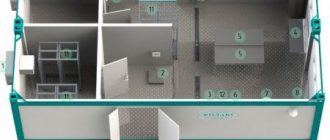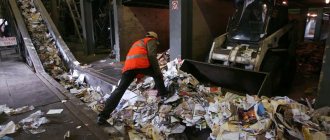Recycling and recycling of glass is the most important area in the human waste disposal industry. This activity is essential to protect nature, conserve the planet's resources and preserve the planet for posterity.
Many countries with fairly high economic performance have actually solved this problem. The fact is that the efficiency of recycling glass recyclables is 100%. Moreover, it is very beneficial from an economic point of view.
In Russia today, the collection and recycling of glass containers and cullet is in its infancy, and a huge amount of glass waste continues to accumulate in the country's landfills and trash cans, thereby polluting the environment.
Why should we hand over glass?
There are many reasons that encourage people not to throw away used glass products, but to take them to specially organized collection points:
- Ecological. In Russia, a small share of used glass is recycled. If the small amount that is disposed of were left in landfills, it would occupy 10,000 hectares of land.
- Environmental 2. Glass is not biodegradable. It is estimated that a soda bottle will take at least 1,000 years to decompose. This means that if glass products are not recycled, the planet will quickly turn into a huge landfill.
- Cullet and glass containers are completely recyclable materials. 100% waste-free production does not harm the planet's ecosystem.
- Broken glass becomes a health hazard for people and animals.
- In soil contaminated with glass, plants develop poorly.
- Using cullet and glass containers as recyclable materials allows you to save the planet's irreplaceable resources. Thus, the glass processing industry allows saving natural gas.
Recycled glass also makes it possible to save sand, soda and limestone.
A small reward is awarded for glass containers handed over to the collection point.
Important: If in Soviet times glass recycling was undertaken to implement economic programs of congresses, in the 21st century the main goal of waste recycling is to protect the environment.
Which taxation system to choose to open a business accepting glass containers
After you have decided on the location where the glass container collection point will be located, you will need to register a business entity.
After registering yourself as a private entrepreneur, you need to register with the tax office at the place of registration for the UTII tax.
Now you are a single tax payer and have a corresponding certificate in your hands.
Please note that you do not need to obtain a license for the preparation and collection of glass containers. According to the latest changes to the Tax Code, this type of entrepreneurship has been simplified and licensing has been abolished.
In the event that you open a glass collection point not at home, but want to use small-scale architectural objects (stalls, kiosks, shopping pavilions, etc.), you agree with the local government authorities on the location of the point and register the right to use the land.
Cash payments to the population for returned glass containers must be carried out in accordance with generally accepted rules and forms.
You have the right to do without registrars of settlement transactions, but you must certainly maintain a settlement book and a book of accounting transactions for settlements, issuing the corresponding receipts for settlements.
There is nothing complicated in such accounting.
To have regular suppliers of secondary raw materials, do not forget about the indispensable engine of progress - advertising your business.
Is all glass recyclable?
Not all glass waste can be converted into secondary raw materials. Recyclable glass waste includes the following:
- Cullet - broken containers. Broken glass has a classification that depends on the color of the fragments: KS - brown, BS - colorless, ZS - green, etc.
- Glass container. This group includes cans and bottles that are collected for recycling.
Selecting a room
Locate the future collection point in a residential area, near a large market, close to chain stores. The place should be passable and “well known”: every resident of the area should know where glass containers are accepted.
Also provide for the possibility of temporary storage of glass containers for further transportation. A room with an open entrance for cargo gazelles is suitable. Don’t forget about a noticeable sign and a stand with the conditions for accepting glass containers.
How is glass recycled?
The process of recycling and recycling glass products consists of several steps:
- Collection of recyclable materials from the population and enterprises.
- Delivery of waste to a recycling point.
- Separation, removal of foreign objects and impurities, washing.
- Grinding using special equipment. Turning small fragments into powder.
- Packaging of crushed product for subsequent use.
The process of recycling cullet at enterprises is a rational and thoughtful disposal of waste. It is worth considering the procedure in more detail.
Processing of raw materials: stages
The process of collecting raw materials must be clearly established. In addition to opening collection points, defective products are purchased from manufacturers. Raw materials are also collected in landfills.
Important: The introduction of European experience in separate waste collection will significantly simplify the process of accumulating recyclable materials for recycling. In many courtyards of Russian cities, special containers for storing glass containers have already been installed.
The processing process at the plant consists of several stages:
- All non-glass components are separated from the cullet. A magnet is used to remove the metal fraction from the total mass. Paper and plastic residues are removed in a vacuum process.
- The resulting mixture is sent for the production of cans and bottles. Cullet is added to raw materials, including sand, lime and soda. Everything is mixed at a temperature of 1500°C to obtain a homogeneous glass fraction.
- The glass mass is poured into molding containers. A new container is being blown out.
The quality of the resulting product is in no way inferior to the quality of analogues made from primary materials. As a result of using recycled materials, energy resources are saved.
Sorting, washing and drying processes
After the waste is delivered to the plant, the waste is sorted by color. Next, the raw materials undergo separation. This is a special procedure designed to separate recyclable materials from non-glass components. Next, the cullet is treated with disinfectants.
Tips for beginners
You don’t need to think that everyone recycles glass and this gives instant profit. Of course, on paper everything looks optimistic and detailed, but in practice you can find many pitfalls, from registering a business and purchasing equipment to possible problems during the work process.
To avoid this, you need to listen to the following advice:
- Clearly understand what goal must be achieved. It is necessary to set several additional tasks that help reveal the essence of the business.
- Prioritize opportunities and process development. You cannot engage in several types of production at the same time, since this is unprofitable.
- Decide on the issues of purchasing raw materials, collecting materials and processing. This point is also important in drawing up a business plan and calculating the necessary funds to start a business.
- Select a room that will be most suitable for solving the assigned tasks and equip it with the necessary lines.
Don’t be afraid to start your own business, especially if you have the means and desire, because in the future this can become not only the goal of life, but also a good opportunity to earn money, clean up the environment and create new interesting materials and products. The main thing is to want and believe in making your dreams come true.
What equipment is needed for glass processing?
The quantity and quality of the processing line may vary. A minimally equipped processing line should consist of the following equipment:
- belt conveyor;
- automated systems for sorting broken glass by shade and color;
- finished product packaging systems;
- containers for collecting sorted waste;
- crusher;
- washing for contaminated waste with paper;
- vacuum and electromagnetic equipment;
- filter sieves of different types.
If you consider glass processing as a business, you need to take the choice of equipment seriously. The selection of devices depends on the disposal methods.
Products obtained from cullet
The product of processing plants is used to manufacture the following types of goods:
- Fiberglass. Subsequently, the material is used to make fiberglass, fiberglass, etc. First, the glass is melted, and then pressed through a platinum filter and cooled. The resulting thread is wound on a special drum. Up to 40% glass waste can be used in fiberglass production.
- Liquid glass. This sealant and waterproofing agent are used in the construction industry. Adding it to concrete improves the quality of the material. To obtain liquid glass, the cullet is placed in an autoclave, where it is ground together with alkali metal hydroxides.
- Glass container. To obtain cans and bottles, recyclable materials are placed in an oven, where they are brought to a liquid state. Then a new container is blown out of the resulting substance.
- Foam glass. The cullet is melted and foamed, then cooled and poured into molds. It turns out to be a heat insulator.
- Finishing tiles. It is used in construction for finishing restrooms, bathrooms and kitchens (kitchen apron). Dyes of the required colors, as well as polyester resins, are added to the crushed culls. The composition is poured into molds where it hardens.
- Glass wool. It is used in the construction industry as an insulating thermal material. Glass wool contains 60-80% recycled glass waste. To make the product, the molten mass is sprayed in a centrifuge using steam. The fiber is placed into molds.
Staff
Organizing a bottle collection business is difficult without:
- Storekeeper . Its task is to sort containers by type and reject bottles with cracks and chips.
- Driver with cargo transport . This position is especially relevant if you have several collection points at once, from which you regularly need to pick up containers and take them to the warehouse.
- Accountant . He will maintain documentation and provide the necessary financial statements to the tax service.
At first, all these functions can be performed by the business owner himself or his family members. As the business expands, it will no longer be possible to cope without hired labor.
Glass and broken glass processing as a business
Recycling glass waste is beneficial. The resulting initial product is in demand in many areas. From it they produce:
- heat insulators;
- fine-grained concrete;
- glass powders;
- bricks;
- ceramic sanitary ware and much more.
It is enough to open a small mini-factory that will produce a certain type of product from cullet, and soon the investment will be recouped, and the owner of the enterprise will begin to receive a net profit. The most relevant types of activity include the production of tiles.
About glass recycling at home
You can recycle waste and unnecessary glass bottles and jars at home. This is a labor-intensive and time-consuming process.
The easiest way to recycle is to put the containers in order. It must be thoroughly treated with disinfectants, then rinsed with clean water and dried. Such containers can be used in the household without harming your health.
It is possible to recycle waste at home by turning it into tiles. To start the process you will need:
- glass;
- binder;
- dye.
The required amount of dye is added to the crushed culls (to obtain the desired shade) and a compound that will bind all the components together. The well-mixed mixture is poured into the mold and left to harden. Once the tiles become hard, they can be used for cladding.
Glass recycling in Russia
In the Russian Federation, the glass processing industry is developing very slowly, and the amount of waste thrown into authorized and unauthorized landfills is rapidly increasing. This exacerbates the country's environmental problems.
Citizens who open glass processing industries benefit society and at the same time mitigate the country's environmental and economic problems.
A properly organized glass waste recycling business can bring good profits.











